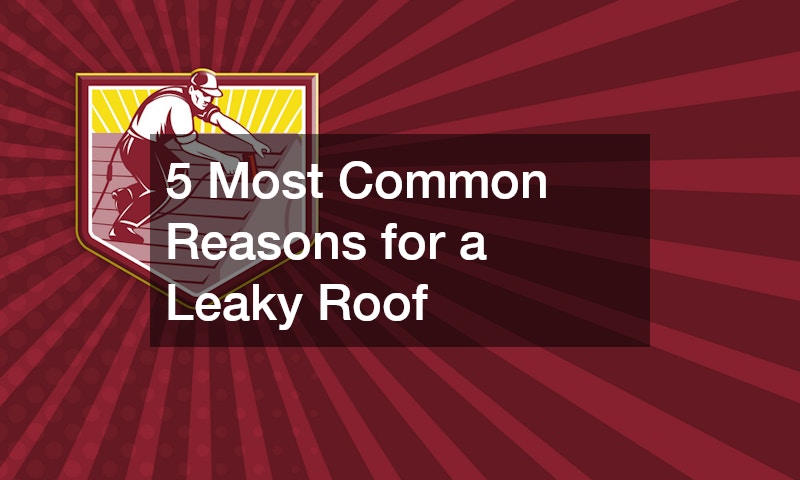5 Most Common Reasons for a Leaky Roof
A leaky roof can cause significant damage to your home if left unaddressed. Water intrusion not only affects the structural integrity of your house but can also lead to mold growth, electrical hazards, and deteriorating insulation. Understanding the most common causes of a leaky roof is crucial to identifying issues early and ensuring proper repairs. Here are the five most frequent reasons homeowners experience roof leaks and what you can do to address them.
1. Damaged or Missing Shingles
One of the most typical causes of a leaky roof is damaged or missing shingles. Over time, exposure to harsh weather conditions such as wind, rain, hail, and extreme sunlight causes shingles to weaken, crack, curl, or even blow away.
When shingles are compromised, water can easily seep through the gaps and reach the underlying roof structure.
Regular inspection of your roof for damaged shingles is essential. If you notice shingles that appear cracked, brittle, or missing entirely, it’s important to schedule leaky roof repair promptly to prevent further damage.
2. Poor Flashing Installation or Damage
Flashing refers to thin pieces of metal installed around roof features such as chimneys, vents, skylights, and valleys where two roof surfaces meet. The purpose of flashing is to direct water away from vulnerable areas and prevent it from entering the home.
If flashing is improperly installed, becomes loose, or corrodes, it creates gaps where water can infiltrate. Damaged flashing is a frequent culprit behind roof leaks, especially around roof penetrations. Regular maintenance to check flashing condition and professional leaky roof repair when needed can help maintain a watertight roof.
3. Clogged or Damaged Gutters
Gutters play an important role in directing rainwater away from your roof and foundation. When gutters become clogged with leaves, debris, or dirt, water can back up onto the roof, increasing the likelihood of leaks. Similarly, damaged or sagging gutters fail to drain water efficiently, causing it to pool along the edges of the roof.
Keeping gutters clean and in good repair is vital to preventing water from seeping under shingles or causing wood rot. Regular gutter maintenance complements any leaky roof repair and protects the overall health of your roofing system.
4. Ice Dams
In colder climates, ice dams can be a significant cause of roof leaks. Ice dams form when heat from inside the home causes snow on the roof to melt unevenly. The melted water flows down to the colder eaves and refreezes, creating a dam of ice that blocks proper drainage.
As water pools behind the ice dam, it can seep under shingles and cause leaks inside the home. Proper attic insulation and ventilation are key to preventing ice dams, but if leaks occur, leaky roof repair specialists can assess and fix the damage caused by these winter conditions.
5. Roof Age and Wear
Every roof has a lifespan, and as it nears the end, it becomes more susceptible to leaks. Materials deteriorate over time due to exposure to sun, wind, rain, and temperature changes. Older roofs may have brittle shingles, worn sealants, or weakened underlayment, all of which contribute to water infiltration.
Routine inspections by a professional are important as a roof ages. Early detection of wear and tear can prevent sudden leaks. In many cases, leaky roof repair can extend the life of an aging roof before a full replacement becomes necessary.
Preventive Measures and Timely Repairs
A leaky roof is never convenient and can escalate into costly and dangerous problems if neglected. Identifying common causes such as damaged shingles, faulty flashing, clogged gutters, ice dams, and roof age helps homeowners stay vigilant. Routine maintenance, inspections, and addressing small issues early are the best ways to protect your home.
If you notice signs of a leak such as water stains on ceilings or walls, damp insulation, or musty odors, contact a professional for leaky roof repair immediately. Timely repairs ensure your home remains safe and dry, preserving both comfort and value.
Staying informed about the common reasons for roof leaks empowers you to take swift action. Whether it’s replacing damaged shingles, fixing flashing, cleaning gutters, preventing ice dams, or monitoring roof wear, these efforts will keep your roof in good condition for years to come.


